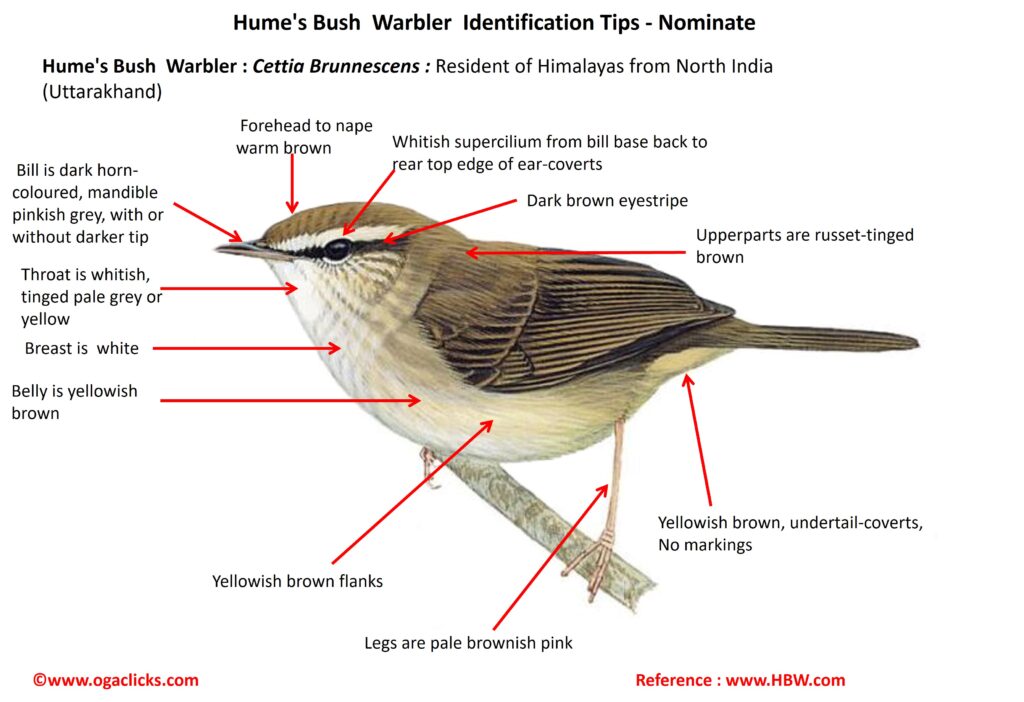
Hume’s Bush Warbler Cettia Brunnescens
Etymology:
- Cettia : Named after Cetti’s warbler, which itself isnamed after the Italian zoologist Francesco Cetti
- Brunnescens : Latin word for “ Brownish” derived from brunneus –brown
Distribution : Resident of Himalayas from North India (Uttarakhand)
Details :Size of 11 cm. A smallish pale bush-warbler with rather long and very fine bill, and square-ended tail. The adult has forehead to nape as warm brown. It has a whitish supercilium from bill base back to rear top edge of ear-coverts, bordered below by dark eyestripe. The upperparts are russet-tinged brown, becoming olive-green on rump. The upperwing and tail are darker with paler rufescent feather edges. The throat and breast are white (sometimes partly tinged pale grey or yellow), becoming yellowish brown on belly and flanks to undertail-coverts. The iris is dark; bill is dark horn-coloured, mandible is pinkish grey, with or without darker tip. The legs are pale brownish pink. The juvenile is pale olive above and yellow-tinged below.
Habitat: It is found in bamboo, occasionally also other dense thickets, in or at edge of forest, including firs. It breeds in 2000–3600 m; in non-breeding season may occur within lower levels of breeding range.
Food habits: It eats invertebrates and their larvae. It forages low down in thick grassy vegetation or bamboo clumps. It is secretive, skulking; usually detected by its voice.
Breeding habits: They breed in May–Jun. The nest is a ball or deep cup of dry grasses, bamboo leaves, moss and spider webs, well lined with feathers, entrance near top, placed on ground or low down in bush or thick undergrowth. They lay a clutch of 2–3 eggs.